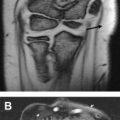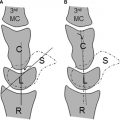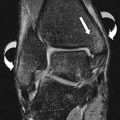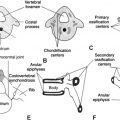This article describes the composition of bone marrow and the normal progression of bone marrow changes as they occur throughout the aging process, and provides examples of pitfalls and variants that may simulate disease.
Bone marrow: challenges for the radiologist
Far from being inert, the bone marrow is a dynamic organ. While composed primarily of water, protein (within cells), and fat, the relative amounts of each are variable not only from person to person depending on their physiologic requirements for the oxygen carrying capacities of hemoglobin but also in the same person over time. As one passes from infancy through childhood and into adulthood, the make-up of bone marrow changes. Just as there are normal variants in every aspect of anatomy, there are normal variants in bone marrow. However, the bone marrow is not immune to disease processes that alter its constituents and often replace them. Radiologists should understand the normal progression of the appearances of bone marrow as one ages, recognize normal variants and normal patterns, and then identify pathologic processes that are manifested by certain disease processes. Although the detection of bone marrow abnormalities is vital for early detection and treatment of disease, false-positive reports of marrow abnormalities can lead to unwanted procedures and the risk of unnecessary treatments. This article explains bone marrow contents and the normal progression of bone marrow changes as they occur throughout the aging process, and provides examples of pitfalls and variants that may simulate disease.
Much has been written in the literature regarding the pathologic changes in bone marrow with disease. Metastatic lesions in bone are approximately 30 times more common than primary bone tumors. The ability to detect these lesions has changed dramatically since the early 1970s when Damadian, Lauterbur and Mansfield began experimenting with magnetic resonance (MR) imaging. The increase in levels of water-bound proteins in metastatic deposits cause these lesions to exhibit signal characteristics that are different from the normal surrounding marrow. However, these lesions are often discrete foci of abnormal signal intensity and are therefore not difficult to detect on T1-weighted sequences, especially against the background high signal intensity of yellow marrow in adults and older children.
Far more challenging to the novice radiologist is the diffuse replacement of marrow in which the signal characteristics of the entire visualized marrow compartment are abnormal or there are symmetric changes. These abnormalities or changes can occur in physiologic and pathologic states, including in smokers, in people living at altitude, and in those with hematologic malignancies, and often as a result of therapeutic effects, including chemotherapeutic and radiotherapeutic effects. Challenges also arise in the pediatric population because of the highly cellular content of their bone marrow. Isolated marrow lesions can appear similar to red marrow on T1-weighted images, and diffuse marrow infiltration can be difficult to distinguish from diffuse hematopoietic marrow, particularly in the acute leukemias.
In these populations, other MR imaging sequences, such as dynamic contrast enhancement and quantitative serial assessments of the fat fraction of bone marrow, are often used to distinguish normal from abnormal bone marrow.
Stay updated, free articles. Join our Telegram channel

Full access? Get Clinical Tree







